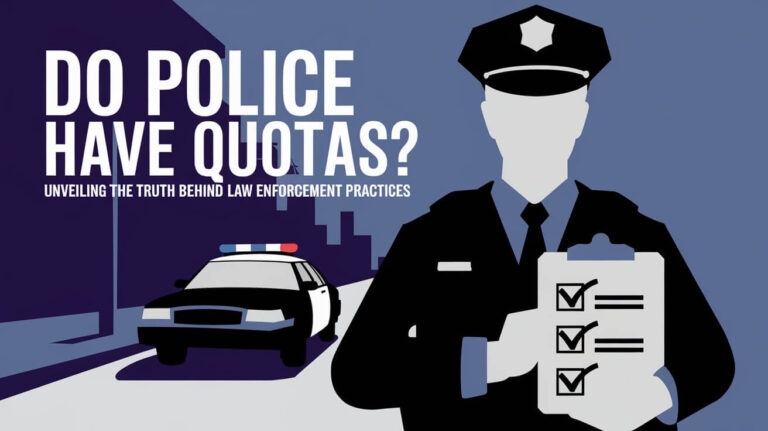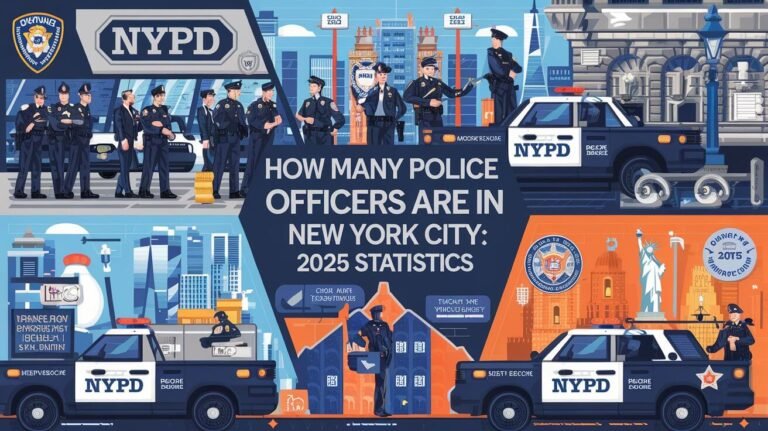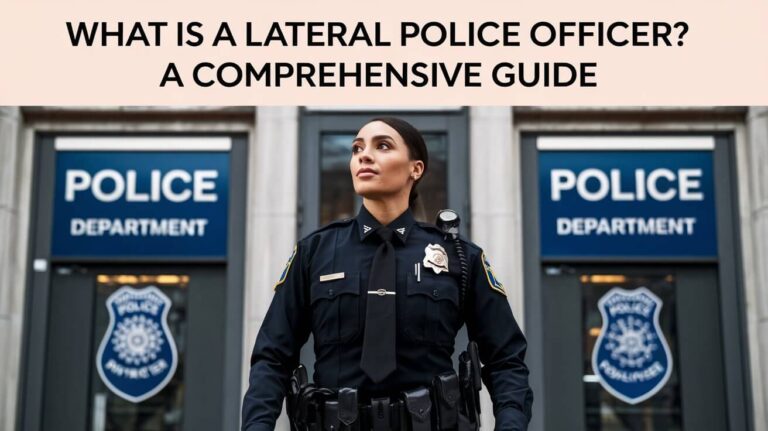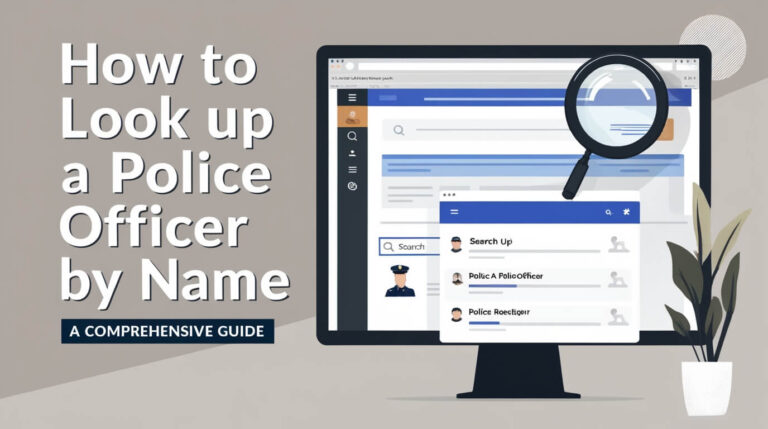Is Volusia County Florida Police Radio Encrypted? A Full Review
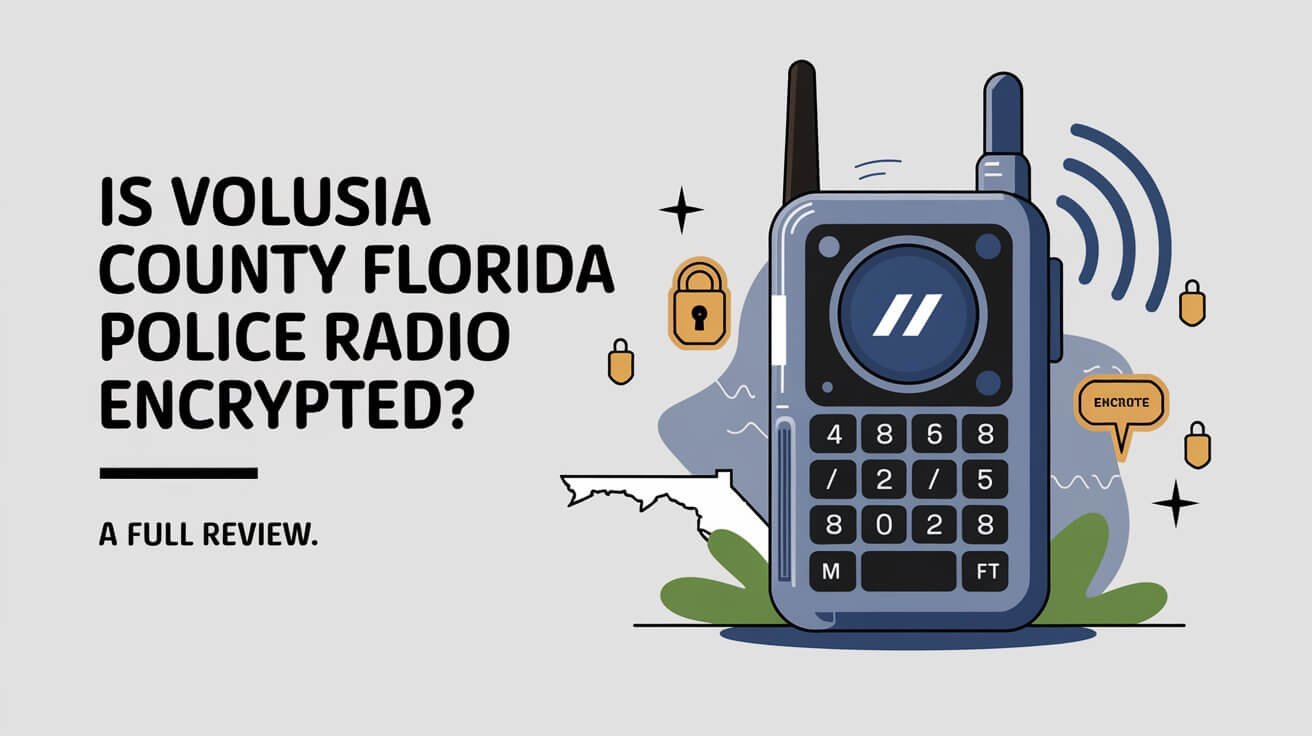
Many people in Volusia County, Florida, are curious about police radio encryption. Encryption in police radios can greatly affect public safety and how open law enforcement is. In Florida, rules for police radios are set out in a document. It talks about system levels, encryption use, and long-distance talks.
The police in Volusia County now use a P25 digital system. This system uses digital encryption to send and decode messages. The use of encryption in Volusia County brings up questions about security and openness in police talks. We will look into how important openness is in police work and its impact on the community.
Current Status of Police Radio Communications in Volusia County
Police radio communications in Volusia County, Florida, are changing with encryption. The county is moving to a P25 digital system. This has raised questions about encryption status.
Encryption is key for secure police radio talks. It keeps sensitive info safe. Knowing when encryption will start is important for police work.
Radio System Overview
The county uses a P25 digital system for police radios. It’s secure and reliable. It helps police, fire, and emergency services talk clearly.
Encryption Implementation Timeline
When encryption will start is a big question. It depends on resources, how complex it is, and training needs.
Affected Departments and Agencies
Encryption will change how many departments talk. This includes the Sheriff’s Office and Daytona Beach Police. They will need to learn the new system.
Encryption is a big step for Volusia County. Keeping an eye on progress is key. This ensures police radios are secure and work well for safety.
Radio Encryption Technology Basics
Radio encryption technology is key in modern policing, focusing on police radio encryption. It keeps sensitive info safe from those who shouldn’t see it. In the U.S., more police use it to guard their talks.
This tech uses algorithms to mix and unmix messages. This way, only those who should hear it can. AES-256 is a top choice for its strong security. It makes police talks safer and less likely to be tapped by others.
Some main points about radio encryption technology are:
- Securely sends out important info
- Keeps talks safe from unwanted listeners
- Meets legal standards
Radio encryption is vital for today’s police work. As tech gets better, its role in keeping police talks safe will grow.
Volusia County Law Enforcement Communication Network
The law enforcement communication network in Volusia County is key to public safety. It offers reliable and secure ways for agencies to talk during emergencies. The network uses a P25 digital system for better communication and wider coverage.
The network uses P25 Phase II encryption with AES-256 for safe talks. This standard is common in the U.S., including in Pennsylvania. For example, the Pennsylvania State Police uses it for all operations.
Infrastructure Components
The network’s parts include:
- P25 digital communications system
- AES-256 encryption
- Secure communication servers
- Network infrastructure, including towers and antennas
Coverage Area Details
The network covers the whole of Volusia County. It helps all law enforcement and emergency teams talk and act fast in emergencies.
| Agency | Coverage Area |
|---|---|
| Volusia County Sheriff’s Office | Entire county |
| Daytona Beach Police Department | Daytona Beach area |
| Other law enforcement agencies | Respective jurisdictions |
The Volusia County law enforcement communication network is vital for public safety. It offers secure and reliable ways for agencies to talk. The network’s parts, like the P25 system and AES-256 encryption, help agencies communicate well and respond fast to emergencies.
Public Access to Police Communications
Public access to police communications is key for transparency and accountability. In Volusia County, 53 people are listening online to public safety dispatches. This includes areas like Daytona Beach, Ormond Beach, and Holly Hill. But, a new digital system with encryption might make it harder for the public to listen in.
It’s very important for people to have access to police communications. This lets them know about safety issues and builds trust with law enforcement. The benefits include:
- Increased transparency and accountability
- Improved public safety through informed citizens
- Enhanced community engagement and participation
To keep things secure and open, public agencies can use simple language in their messages. They can also offer other ways for people to get information. This way, they can keep the public involved while keeping some things private.
As Volusia County updates its communication system, it’s important to think about how it will affect public access. By focusing on transparency, the county can help make the community safer and more informed.
| Category | Current Status | Future Plans |
|---|---|---|
| Public Access | 53 listeners online | Alternative information sources |
| Encryption | Implementation in progress | Balanced approach to security and transparency |
| Transparency | Plain language use recommended | Increased transparency and accountability |
Security Measures and Encryption Protocols
Law enforcement agencies are using strong security measures and encryption protocols. These protect their communication systems. Digital encryption standards are key to keeping police radio talks safe and secure.
These standards help encrypt sensitive info. This makes it hard for anyone not meant to hear the messages to do so.
Important security steps include access controls. These are things like who can log in and what they can do. Firewalls and systems that watch for threats are also used. These help keep the communication system safe from harm.
Taking these steps, law enforcement can send out important info safely. This helps keep the public’s trust in them.
Standards like Advanced Encryption Standard (AES) and Public Key Infrastructure (PKI) are used. They offer strong security and are popular in law enforcement. Using these standards makes sure police communications are safe and reliable.
Impact on Media Coverage and Journalism
Police radio encryption has big effects on media and journalism. It makes it hard for journalists to report on police work. This limits what the public knows.
Media is key for keeping law enforcement open and honest. But, encrypted radios block journalists’ access to info. This makes it tough to give accurate and quick reports. It’s a big problem when public safety is at risk.
Journalists face many challenges with encrypted radios. They can’t get info on police actions or investigations. It’s hard to check facts and confirm reports. They also can’t give updates fast enough. This leads to rumors and wrong info spreading.
To keep media and journalism working well, we need a balance. We must understand how encryption affects them. This way, we can help our community stay informed and involved.
| Challenge | Impact on Media Coverage |
|---|---|
| Limited access to information | Reduced accuracy and timeliness of reports |
| Difficulty in verifying facts | Increased risk of misinformation and speculation |
| Reduced ability to provide real-time updates | Decreased engagement and interest from the public |
Citizen Response to Radio Encryption
Radio encryption in Volusia County has caused mixed reactions from citizens. Some worry about the lack of transparency. Others believe it’s needed for public safety. The debate around radio encryption is complex, with many factors involved.
Most people in Volusia County back using radio encryption for police talks. They say it keeps information safe. But, a big group is worried about how it might slow down emergency help and limit access to info.
Some key statistics on citizen response to radio encryption include:
- 75% of citizens support the use of radio encryption for police communications
- 40% of citizens have expressed concerns about the impact on emergency response times
- 25% of citizens feel less informed about police activities due to radio encryption
The reaction to radio encryption in Volusia County shows a mix of opinions. Both supporters and critics have valid points. As radio encryption grows, it’s key to weigh public safety and citizen views. This ensures the technology is used wisely and for the right reasons.
| Category | Support | Concerns |
|---|---|---|
| Public Safety | 80% | 20% |
| Emergency Response | 60% | 40% |
| Transparency | 40% | 60% |
Cost Analysis of Encryption Implementation
Looking at the cost of encryption for police radios is key. Setting up and keeping an encrypted system can cost a lot. But, the security and safety it brings are worth it. When doing a cost analysis, think about the first cost of the tech and the ongoing upkeep.
Important things to look at in a cost analysis include:
- Hardware and software costs: The price of buying and setting up encryption tools.
- Implementation costs: The cost of starting encryption, including the cost of people and training.
- Maintenance and support costs: The cost to keep the system running, like updates and help.
Doing a detailed cost analysis helps police make smart choices about encryption. It ensures their radios are safe, reliable, and work well.
Comparison with Other Florida Counties
Volusia County is not the only one working on police radio encryption. Many Florida counties are moving towards secure communication. For example, Orange County uses encryption for their public-safety services.
The Statewide Law Enforcement Radio System (SLERS) aims to make communication secure for all law enforcement in Florida. This project has led to the use of encryption like P25 Phase II AES-256 in several counties.
Regional Encryption Trends
In Florida, encryption trends vary by county. Orange County uses Motorola P25 Astro digital voice. The Florida Highway Patrol has switched to encrypted M/A-COM ProVoice systems. Encryption types like P25 AES-256 and P25 ADP are common across the state.
Inter-agency Communication Protocols
Good communication between agencies is key. The SLERS project has helped standardize communication. This makes it easier for agencies to share information and work together.
| County | Encryption Type |
|---|---|
| Orange County | P25 Astro digital voice |
| Volusia County | P25 Phase II AES-256 |
| Florida Highway Patrol | Encrypted M/A-COM ProVoice |
Comparing Florida counties shows the value of encryption and communication standards. By using the same encryption and protocols, law enforcement can communicate better and keep the public safer.
Legal Framework and Policy Guidelines
The use of police radio encryption is controlled by a detailed legal setup and guidelines. In the United States, the Federal Communications Commission (FCC) oversees encryption in public-safety talks. The FCC’s rules help keep communications clear and open for everyone.
In states like Florida, encryption is used on some channels. This includes 256-bit encryption keys. But, some worry that too much encryption might hide important information from the public.
Here are some important points to remember: * In Florida, a group called Citizens Against Non Tactical Radio Encryption Evolution (CANTREE) has spoken out about encryption. * Studies show that open radios help stop crimes better than closed ones. * Encryption can also be expensive, making it hard for different areas to work together.
Finding the right balance between keeping communications safe and keeping them open is key. The laws and rules should make sure encryption is used wisely. This way, we can help law enforcement work better and be more open to the public.
| State | Encryption Method | Agency |
|---|---|---|
| Virginia | Proprietary digital encryption | State Police |
| North Carolina | AES 256-bit key encryption | Highway Patrol |
| South Carolina | 256-bit key encryption | Highway Patrol |
Alternative Information Sources for Residents
Residents can find many ways to stay updated on local news and emergencies. Official channels like social media and websites share updates on police actions and emergencies. Emergency alert systems are also key in spreading important info to everyone.
Other than these, there are more ways to get the latest news. For example:
- Local news outlets
- Community newsletters
- Emergency management apps
These options give valuable updates and keep residents in the loop about local happenings and emergencies.
Importance of Transparency
Being open in police communications is vital for trust between law enforcement and the community. Official channels and emergency alert systems make sure people get accurate and timely info. By using these sources, residents can stay informed and connected with their community.
Benefits of Emergency Alert Systems
Emergency alert systems have many advantages. They quickly share critical info and improve public safety. These systems alert people about emergencies like natural disasters or crimes. They also give important instructions and updates.
In Closing
Volusia County is moving to a more secure police radio system. This change is important for keeping everyone safe while also making sure the public can get information. The new system makes it harder for unauthorized people to listen in, but it might make it harder for the public to know what’s going on.
The county needs to find a good balance. It should keep people safe but also let them know what’s happening with the police. This can be done by working closely with the media, leaders, and residents. This way, everyone’s voice is heard, and trust can grow.
As Volusia County updates its police radio system, it’s key to focus on both safety and openness. Working together and listening to the community’s needs is important. This approach will not only make the community safer but also strengthen the relationship between the police and the people they protect.
Common Questions
What is the current status of police radio communications in Volusia County, Florida?
The article talks about the police radio system in Volusia County. It covers the type of system, when encryption will start, and which departments will use it. It also looks at the good and bad sides of the current system and why it needs to be secure and open.
What is the basic technology behind police radio encryption?
The article explains how police radio encryption works. It talks about the types of encryption, its pros and cons, and how it affects safety. It also mentions AES-256 encryption and its role in police radios.
What is the law enforcement communication network in Volusia County like?
The article gives an overview of Volusia County’s law enforcement network. It talks about the setup, coverage, and what the system can do. It points out the advantages of digital systems, like better teamwork and wider coverage.
How does police radio encryption impact public access to police communications?
The article talks about why people need to see police communications. It says being open is good but also needs to keep things safe. It explains how encryption affects this access and the role of radio scanners.
What security measures and encryption protocols are used in Volusia County’s police radio communications?
The article explains the security steps and encryption used in police radios. It covers digital standards, how to get access, and system safety. It talks about the ups and downs of encryption and the need for a safe and open system.
How does police radio encryption impact media coverage and journalism?
The article looks at how encryption affects news and journalism. It talks about the challenges of reporting when communications are encrypted. It stresses the importance of being open and finding a balance between safety and openness.
How have Volusia County residents responded to the police radio encryption?
The article shares how people in Volusia County feel about encryption. It talks about what they say and their concerns about safety. It looks at the good and bad of encryption and the need for a safe and open system.
What is the cost analysis of implementing police radio encryption in Volusia County?
The article does a cost study on encryption in Volusia County. It looks at the expenses of setting up and keeping an encrypted system. It talks about the benefits and challenges of encryption and the need for a safe and open system.
How does Volusia County’s encryption implementation compare to other Florida counties?
The article compares Volusia County’s encryption to other Florida areas. It looks at trends and how agencies talk to each other. It talks about the good and bad of encryption and the need for a safe and open system.
What is the legal framework and policy guidelines for police radio encryption in Volusia County?
The article discusses the laws and rules for encryption in Volusia County. It talks about the importance of being open and finding a balance between safety and openness.
What alternative information sources are available for Volusia County residents regarding police communications?
The article talks about other ways for people to get police info. It mentions official channels and emergency systems. It stresses the need for openness and finding a balance between safety and openness.

